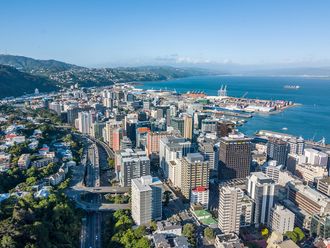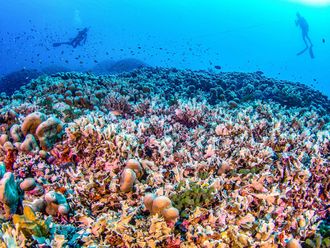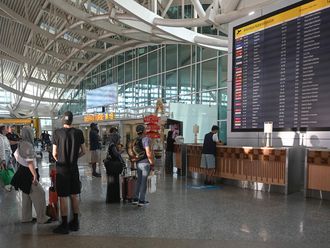
Minamiboso, Japan: To mark the start of Japan’s whaling season, workers in the coastal town of Minamiboso on Thursday carved up one of the animals as a crowd of grade school students and residents watched, with free samples of its fried meat handed out later.
The annual event took place in the district of Wada in the town some 100km (62 miles) south of the capital, Tokyo, a week into Japan’s first coastal whaling season since a global court halted the country’s better known Antarctic whaling in March.
Though environmentalists condemn whaling, Japan maintains it is an important part of its food heritage. Wada is proud of its centuries-old traditions and takes pains to teach such local culture and history to its children.
Thirty-eight fifth year students from the town’s primary school murmured and gasped as workers used ropes and a pulley to drag up a concrete ramp a nine-metre-long whale killed the previous night.
“This part is the fat. If you’re scared, close your eyes,” said Yoshinori Shoji, president of the Gaibo Hogei whaling company, as one of the workers sawed off the whale’s skin and fat, exposing the dark meat and entrails.
“They’re so skilful,” some students said. But others gasped, “Stop! It’s so pitiable!”
Whale is a rarity on most Japanese tables, but Wada residents regularly eat it at home and in school lunches.
“It’s so good,” said Taishi Makino, 10.
In Wada, souvenir shops, restaurants, supermarkets and whale speciality stores line the streets, selling whale meat products and dishing up everything from whale sushi to fried whale.
“Here in Wada we eat whales. Every family eats whale at least once during the summer whaling season,” said Michiyo Masuda, the students’ teacher. “If we are eating whales, we have the responsibility to see and learn how they’re prepared.” At her school, fifth grade students study the biology of whales, the history of whaling and how to cook the meat.
“For us, whale is food. Whaling is a good tradition, and I want to pass on the trade before I die,” said Shoji, whose firm processes and sells whale.
He lectures on whaling every year at local schools, and hands out samples of preserved whale fin.
Japan’s international whaling programme suffered a blow when the International Court of Justice (ICJ) in March ordered a halt to its “scientific whaling” programme in the Antarctic.
The surprise move prompted Japan to cancel whaling in the Southern Ocean for 2014-2015.
Japan has long maintained that many whale species are not endangered. It began what it calls scientific whaling in 1987, a year after an international moratorium took effect. Coastal whaling is exempt from the moratorium.
Tokyo intends to continue scientific whaling despite the ICJ ruling, saying Japan simply needs to devise a new research plan in line with the finding, as it does not cover coastal whaling or whaling outside the Antarctic.
“The ruling doesn’t say anything about any kind of whaling except scientific research. Other types of whaling are allowed,” said Shoji.
In the past week, his company has killed six Baird’s beaked whales, the type sliced up on Thursday, which is sometimes also called a bottlenosed whale, after its prominent beak.
The company plans to catch 24 more before whaling season ends in late August.
“It’s our right to take and eat whale within our waters,” Shoji added.












